Despite its small size, Okinawa sure has giant problems. Due to its strategic location, Okinawa has struggled as a pawn in Japanese and US affairs since before World War II.
Today, the independent kingdom turned prefecture houses the bulk of US military installations in Japan. For Okinawa, the situation brings a host of problems including increased crime and environmental damage.
A history of resistance, including protests and even a riot, have done little to change Okinawa’s situation. However, its native population refuses to give up, voicing their frustrations in a recent local election that could change the face of Okinawa and its relationships with Japan and the US.
Why has controversy embroiled such a small group of islands? Can a single prefecture stave off the wills of two world powers? What does the future hold for the former Ryuku Kingdom, known today as Okinawa?
Okinawa Elects to Resist
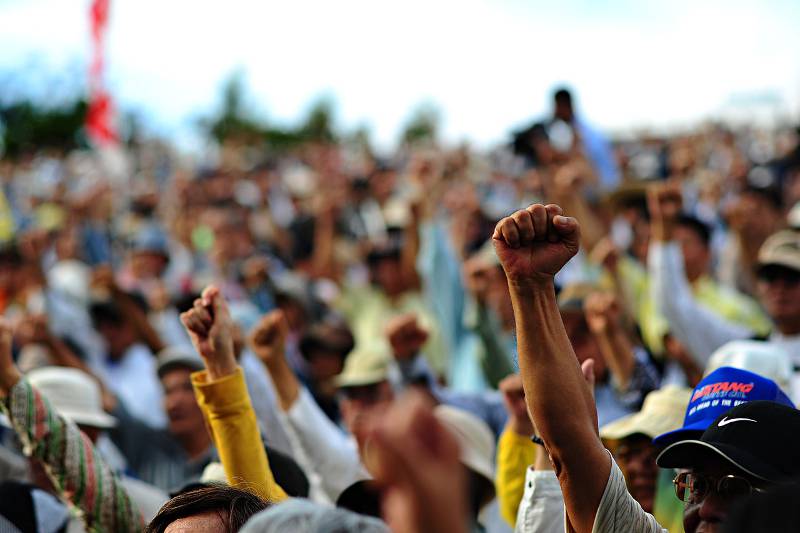
On November 16, Okinawans elected Takeshi Onaga as their new governor. Onaga’s election bears special significance because he opposes current Prime Minister Abe’s platform of continued US military presence in the prefecture. With the US planning to build a new military facility in Nago City, the time for Okinawa to act is now.
The election signifies Okinawa’s continued resistance to developments that guarantee US presence in the prefecture for decades to come. Matthew M. Burke and Chiyomi Sumida of Stars and Stripes write, “The former Naha mayor ran on a platform of blocking the move of flight operations from Marine Corps Air Station Futenma in central Okinawa to an expanded Camp Schwab in the remote north, a move seen as pivotal to the U.S. realignment of forces in the region and mutual defense agreements.”
Onaga’s first order of business is blocking the construction of the new military facility. His next move would be limiting US presence in Okinawa or removing it altogether.
Although the US military expansion in Okinawa lacks resistance in Japan as a whole, local opposition has grown. “He (Onaga) defeated incumbent Gov. Hirokazu Nakaima by a huge margin — 100,000 more votes of 620,000 cast”(Burke). Onaga’s recent victory represent’s the people’s will, a majority of which want change.
With many Okinawans opposed to the US and the Japanese presence there, one might wonder how Okinawa ended up in its precarious situation in the first place.
A victim of its size and lack of power, Okinawa had no choice.
The Ryukyu Kingdom
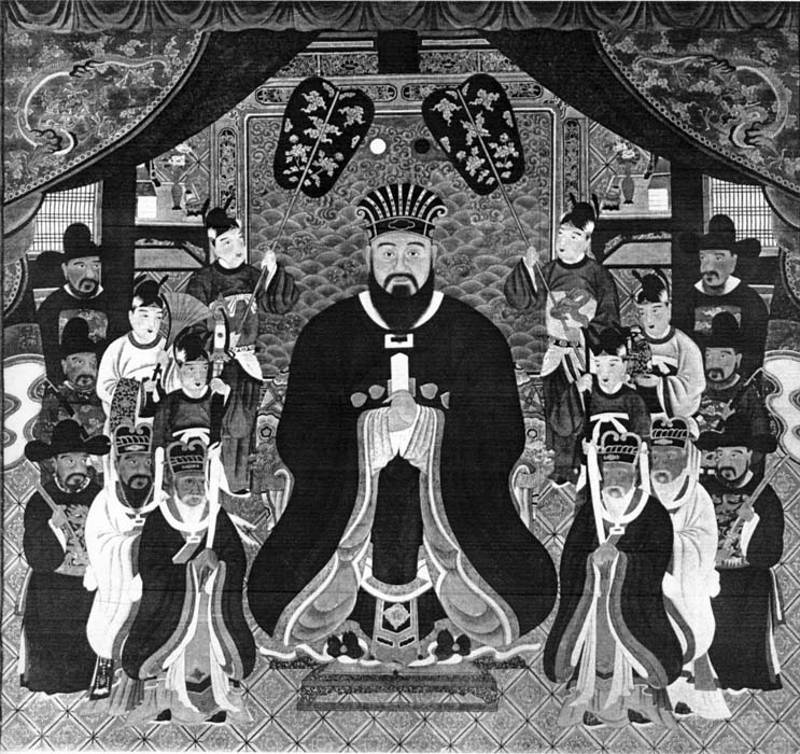
Prior to the seventeenth century Okinawa functioned as an independent nation known as The Ryukyu Kingdom. Extending south into the East China Sea, the distance of this string of islands from Japan protected it from Japanese interference for centuries.
Ryukyu’s earliest ties lay in the west, with its influential trade partner China. As a result, Ryukyu culture developed a distinct Chinese flavor. Although Ryukyu’s king pledged loyalty to the Chinese emperor, the kingdom remained an independent nation with control over its own destiny (OPN-LA).
Japan’s Satsuma han (feudal domains ruled by daimyo in the Edo period) changed that in 1609 when they invaded Amami, Ryukyu’s northern islands. Satsuma exploited Ryukyu, forcing its people into sugar production.
Islanders underwent a period that they refer to as ‘Sato Jigoku,’ or ‘Sugar Hell.’ The Amami islands… became integral to the growth of Satsuma’s economy and consequently to it’s growth in military strength. (OPN-LA)
However, with Satsuma concentrated in Amami, the rest of Ryukyu remained relatively free from interference and the kingdom’s trade relations with China continued.
The 1854 arrival of Commodore Perry’s infamous black ships would help bring any semblance of Ryukyu independence to an end. In Crossfire Couples, Chris Ames notes that Perry created the first US base in Ryukyu when he stopped there on his way to Tokyo Bay in 1853 (199). The site would serve as a docking and supply station and signified the US’s first footprint on the islands.
The first in a long and distressing history of US military abuses occurred soon after Perry’s arrival when seaman William Board attacked, and according to many sources raped, an elderly Ryukyu women (Ames 199).
Although Commodore Perry had little influence in Ryukyu itself, his arrival in Japan ushered in a period of modernization known as the Meiji era. The Meiji government’s goal to become a world power ended any semblance of Ryukyu independence. OPN-LA explains,
Japan felt the intense need to develop some form of geo-political buffer zone to protect itself from possible military encroachments by western powers. The Ryukyu Islands presented the perfect candidate for such protection, by providing some form of security on Japan’s southern front… Japan forced the annexation of the Ryukyu Kingdom in 1879… ending the ruse of Ryukyuan sovereignty.
As an partially independent kingdom and trade-partner to China, Ryukyu represented a legal wrinkle that was ironed out in its transformation to Okinawa Prefecture. The prefecture has been forced to bend to the whims of Japanese and US interests ever since.
World War II Linchpin

Overshadowed by the commemoration of Iwo Jima and the bombings of Hiroshima and Nagasaki, The Battle of Okinawa occupies a minor page in American historical lore. But it was a vicious battle.
Doug Bandow of Forbes explains,
The so-called ‘Typhoon of Steel,’ as the American invasion campaign was called, ran from April through June in 1945. Combat was brutal. Estimated civilian casualties ran up to 150,000.
The battle also saw astronomical military losses. In his book, Prompt and Utter Destruction: Truman and the Use of Atomic Bombs against Japan Samuel Walker writes,
The combined American casualties of 12,000 killed and missing and another 60,000 wounded far exceeded those of any other battle in the Pacific war… Japanese military forces suffered at least 70,000 deaths. (51)
Once occupied, US forces had planned to use Okinawa as a point of entry into Japan. But the Battle of Okinawa’s heavy casualties and the Japanese force’s refusal to surrender made the US second-guess its invasion plan, which was rendered unnecessary after the bombing of Hiroshima and Nagasaki and Japan’s subsequent surrender.
Although it did not serve the US as planned, Okinawa became a “veritable colony” (Bandow). The US military built installations as a measure to prevent a Japanese military resurgence (Sarantake 62). Okinawa remained under US occupation until 1972 when it was returned to Japan. The US military presence remained and continues today.
The former independent nation remains in a precarious position – under Japanese control and home to the US military. And despite resistance, neither world power wants to relinquish its position.
How Japan Benefits
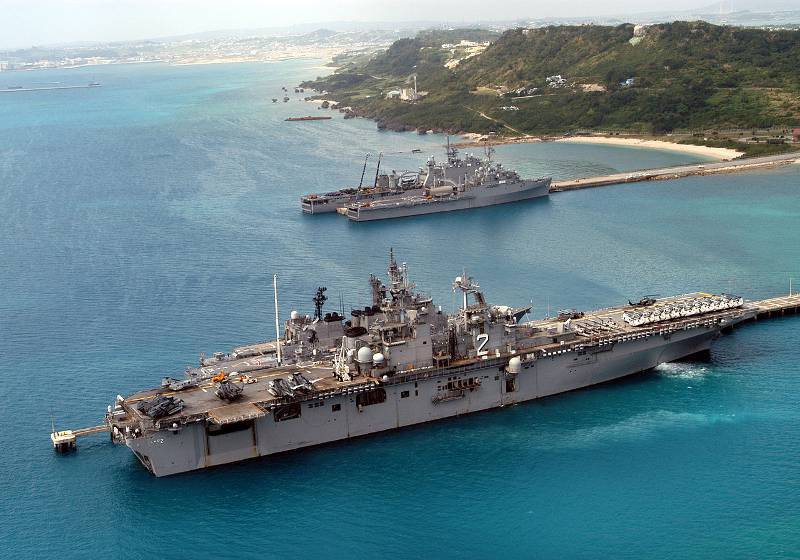
Japan’s lack of allies and military power increases the significance of its alliance with the US. But Japan has to give in order to receive, and the US won’t lend its “services” without cooperation. In order to reap the benefits of US military presence, Japan must allow US bases on its soil. And for the small, resource-poor nation the benefits are many.
Japan lives in the shadows of neighboring world powers – China, Russia and North Korea. By allowing US bases on its soil, Japan gains vital military presence and protection. Any hostile action taken against Japan must be carefully considered thanks to the threat of instant US military retaliation.
US military presence in Japan may alleviate the worries of Japan’s neighbors as well. Doug Bandow writes that by preventing “a rearmed, resurgent Japan,”
The (US/Japan) alliance also eases Tokyo’s diplomatic burden, which otherwise would include reassuring neighbors still obsessed with Imperial Japan’s military depredations… It is a claim that even Japanese officials have used on occasion: protect us, since surely you don’t want the Imperial Japanese navy wandering the Pacific again.
Reliance on the US military eases the burden Japan would face if it had to maintain its own armed forces. Instead, those finances and resources can be focused elsewhere, providing economic relief.
How the US Benefits
The United States also enjoys its alliance with Japan. Located just outside the Asian mainland, bases in Japan give the US a military presence in East Asia. If the situation calls, the US can respond with immediate action.
By providing Japan with military protection, the US need not worry about Japan acting on its own. The partnership has been described as the “spear and shield.”Ankit Panda of The Diplomat explains,
The United States’ formidable offensive capabilities were the ‘spear’ to be paired with Japan’s ‘shield.’ After all, Japan, with its aptly named Self-Defense Forces, could hardly aspire to much more given the circumstances.
But the alliance isn’t all love and roses. No one wants a foreign military in their backyard, no matter how great the benefits might be. But what if there was a way Japan could enjoy the benefits of US military protection, without suffering the problems associated with military presence?
There is. And it’s called Okinawa.
Okinawa became mainland Japan’s sacrificial lamb. By allowing the US military to build most of its bases in Okinawa, Japan enjoys the advantages of US military presence without the disadvantages, which occur hundreds of miles south, far from the Japanese mainland.
Okinawa’s burden hasn’t gone unnoticed. “Although nearly six of ten Japanese is critical of the resulting burden on Okinawa,” Doug Bandow points out, “none of them wants another U.S. base near their neighborhood.”
The US has bases scattered throughout Japan but Okinawa houses the biggest concentration, earning it the moniker of “America’s unsinkable aircraft carrier”(Harumi Ozawa). Over half of the 47,000 US service personnel stationed in Japan according to AFP. And one Okinawa government website states that Okinawa is home to over thirty training facilities which translates into almost 74 percent of the overall US military presence in Japan.
And so Okinawa remains, a land torn between an independent tradition, Japanese control and US occupation.
Why Okinawa Wants the USA Out
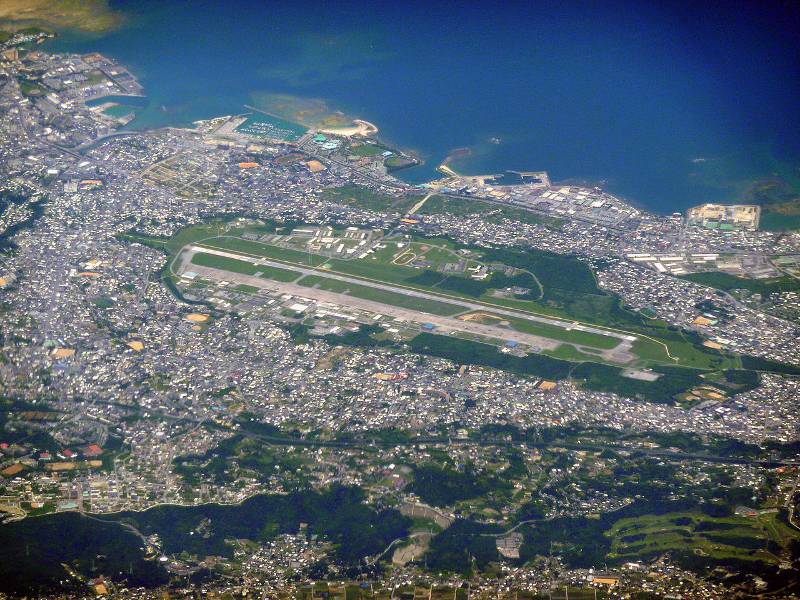
Foreign military presence brings a host of problems to any location. But this is especially true in Okinawa, thanks to its small geographic size and large concentration of US bases.
Doug Bandow paints a picture of occupied Okinawa,
Long fences separate residents from property owned by their ancestors. Air bases crowd civilian neighborhoods. Prime beaches remain under U.S. military control. Thousands of young, aggressive foreign men transform local life—and often not for the good.
Okinawans must find it hard to consider the positives of military presence while confronted by the negative aspects in their everyday lives.
Military Accidents
Residents worry about military bases located near cities and residential areas. Aircraft bring noise pollution and the threat of major of accidents – a threat that has become an unsettling reality.
The worst accident occurred in 1959 when a military jet crashed into a local elementary school. “It was a major disaster,” Eiko Asato writes, “17 people were killed, 121 people were injured (wikipedia lists 210 injuries), 17 private houses, one public hall and three classrooms were completely burned.”
Another accident occurred in 2004 when a military helicopter crashed into a university. As recently as 2014 a helicopter crashed due to pilot error.
However aircraft pose less of a risk than frequent traffic crashes, which see nearly 200 fatal accidents a year (Burke). The most famous incident occurred in late 1970 when intoxicated military personnel struck an Okinawa man with their car. Building frustration exploded into attacks on military personnel and buildings that what would be known as the Koza riot.
Environmental Impact
The US military presence also has a sizable environmental impact. “Adding another military facility to Okinawa by destroying the beautiful water of Henoko is something we should never let happen” Onaga declared (Burke).
The military builds over pristine land and docks at Okinawa’s beautiful beaches. Construction even puts native species at risk, including the endangered dugong (Mitchell). Okinawa’s pristine beaches, mountains and forests act as an economic asset, attracting tourists and therefore outside money.
Crime
Instead of pleasure-seeking tourists with open pocketbooks, Okinawa brings in US military personnel. Unlike vacationers visiting by choice, soldiers stationed in Okinawa become bored, homesick and frustrated. At times these feelings escalate into aggression or crime.
According to an Okinawa government report on US military crime, traffic accidents make up the bulk of reported problems, with robbery accounting for most of the rest. But in regards to the US military, horrible acts of violence overshadow all other crimes and rape cases by military personnel have occurred with disgusting frequency over the years.
Asato Eiko of the Transnational Institute reports,
According to a report entitled “Post-War Crimes against Women of Okinawa by US Soldiers” by the Association of Women in Action Against Military and Military Bases, the number of rape cases between 1945 and 1997 was about 180, of which 22 were committed against young women less than 20 years of age.
The disturbing trend first received major publicity in 1955, when a US soldier raped and murdered a six year old girl before disposing of her disfigured body. Outrage reached fever pitch when locals discovered that the crime would be handled by the US military and its courts. Thanks to extraterritorial rights perpetrators would avoid the local justice system and possible death penalty (Asato).
In 1995 the planned abduction and gang rape of a twelve year old girl again sparked outrage among Okinawa’s residents. In 2008 a marine Staff Sargent was convicted of sexually abusing a fourteen-year-old girl (Onishi). The most recent case occurred in 2012, when two soldiers making a brief stop in Okinawa robbed and raped a Japanese woman.
Military Efforts to Improve
The crimes and overall belligerent attitude taken by US military personnel have done nothing to help US, Japanese and Okinawan relations. However, the US military has taken preventative efforts after the 2012 incident. Travis J. Tritten of Stars and Stripes writes,
Strict new liberty and alcohol rules coincided with a historic drop last year (2013) in crimes committed by U.S. personnel on Okinawa… Okinawa-based troops were banned from all off-base drinking for the first half of 2013…. The Marine Corps leadership on Okinawa has also emphasized cultural awareness training for newly arriving service members.
Recent rules have decreased crime and other incidents. But how long will they last? The quick easing of drinking bans doesn’t bolster Okinawans’ confidence in the US military’s commitment to the changes.
The Trouble Continues
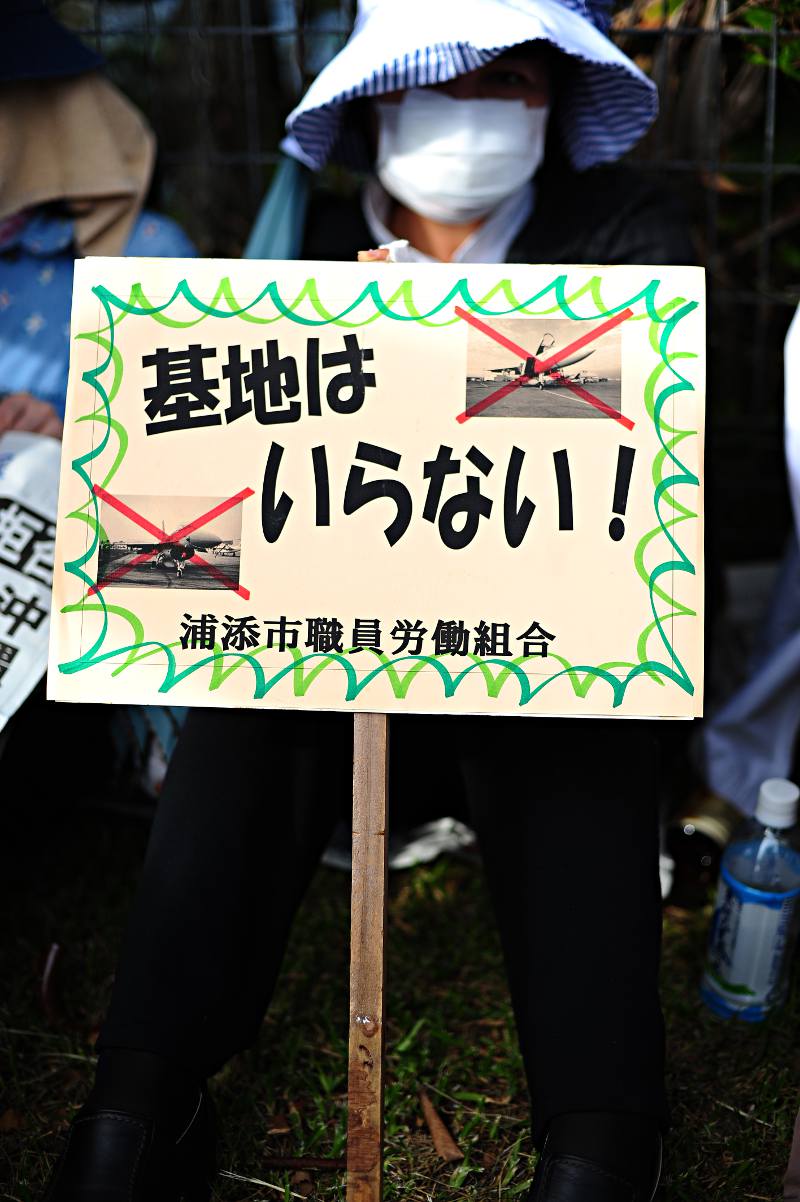
As an elected official that promises to represent the will of those that voted for him, Onaga’s election has brought hope to many Okinawans.
“We’ll break through the wall that the Japanese and American government have put up,” Onaga declared (Johnston).
“It is against the spirit of democracy to ignore the consensus of the local public. It is outrageous for the government to ignore it,” law professor Hideki Shibutani of Rikkyo University in Tokyo said (Burke).
But not everyone wants the US military out.
Many Japanese believe that Japan needs the US military protection. Recent controversy over disputed islands has forced Japan to grow uneasy in the face of Chinese and Russian encroachment.
Some Okinawa residents hope the US base will bring economic opportunity to the struggling prefecture. Shop owners hope the military bases will bring business. Other unemployed residents hope it’ll bring construction jobs, among other opportunities.
Despite the noise caused by Onaga and his supporters, prior agreements will make it difficult to halt construction. Matthew M. Burke and Chiyomi Sumida write,
Despite the rhetoric, the Marine Corps and the Japanese government have said they remain committed to the relocation. Legal scholars said while there is a chance Onaga could block the move, it is slim.
Onaga’s recent election and ongoing protests have called renewed attention to the longstanding issues and human rights violations that have defined Okinawa’s tragic history. As the three-way dance continues we are left to wonder, will 2015 finally bring relief to Okinawa? Or will the people continue to be ignored?
